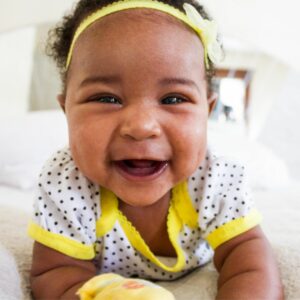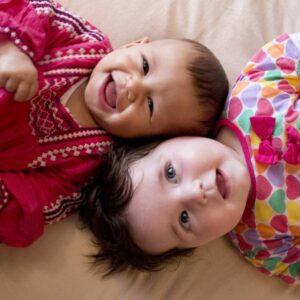The word “motivation” comes from the Latin word “moveo” meaning to move, or “motivus” meaning to stir or move. We know that moving stimulates the brain and sparks curiosity which then prompts further movement. And so the cycle continues.
The floor is a child’s first playground. In floor play babies start to understand that space comes in different sizes, shapes and textures and time spent playing on the floor gives them a different perspective and helps them to start to make sense of the world. It is a great space for learning to take place for two simple reasons: it’s easy to get to and you can’t fall off it. It offers not only room to move but also allows a child to make physical choices that make the learning unique to them.

When referring to floor play for babies we are referring to three movement opportunities:
Back play is when a baby is lying on their back and exploring what is above and to the sides of them. It gives babies a lot of opportunity to explore their hands and fingers, and encourages eye focus by giving them the opportunity to look at objects near and far. It also enables them to gain deliberate control of their head as they lift and turn it, cross the midline between upper and lower parts of the body as they grab their feet and gain strength and coordination for rolling onto their front.

Although not popular with all babies, spending time on their fronts is just as important as the time spent on their backs.
In tummy play lots of work is done to strengthen the arms and upper body to help babies to hold their head up and maintain balance when they eventually get up on two feet. Pushing up on the arms also opens up the spinal column from the C curve they had in the womb to the S curve required for balance and locomotion. It also gives sensory information to the soft organs in the abdomen like the stomach and bladder which helps with appetite and toilet training.
Being on their front also puts them in the right position for belly creeping and pushing up onto all fours. It is around this time that the rocking reflex kicks in which enables them to learn new forms of coordination as well as the ability to move one side of the body independently from the other - look out, crawling is next! It also helps to open up the hands from the initial newborn grasp which provides lots of proprioceptive and sensory input as the hands press into the ground.

Like back and tummy play, crawling is also particularly valuable for early development, especially in terms of the brain and body organisation that is responsible for balance and getting up on two feet.
When babies start to crawl postural reflexes replace primitive reflexes. The ability to move one side of the body independently from the other is refined and the movement pattern of opposite arm and opposite leg is established. The arms also develop the ability to move independently from the head, bilateral work in the body supports cross lateral linkage in the brain and the upper/lower and left/right body midlines are repeatedly crossed. In addition the spine further lengthens out to the S shape that is required for moving on two feet and it is also a great workout for the shoulders, neck, wrists and hands.
Encouraging babies to spend time on their tummies and to crawl has greater benefit than pushing them to sit and walk before they are ready.

Having the freedom to play on the floor or ground is extremely important for children for a variety of reasons.

